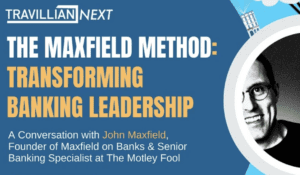Ask a community bank CEO what keeps them up at night, and somewhere between regulatory compliance and talent retention, you’ll hear about data—or rather, the lack of control over it.
Banking data experts examine this issue constantly, in response to an ever-shifting atmosphere, especially from the standpoints of staffing, storage, growth, compliance and M&A.
What tactics truly give banks a competitive edge in winning the war on data?
Bank Data Expert Weighs In
Lee Easton knows; he addresses this problem every day. As Founder and President of iDENTIFY, a Tulsa-based firm that handles large-scale data processing and storage for banks across the country, he’s spent years watching financial institutions wrestle with sprawling, inconsistent data environments that slow down operations and open the door to risk.
“Most banks don’t really own their data,” Easton says. “They have it—but it’s scattered across systems, departments, and formats. That makes it hard to use and even harder to trust.”
The good news? Easton believes banks don’t need to rip and replace their systems to fix the problem. They just need to rethink how they approach data—less like a static asset, more like an ongoing process that deserves the same discipline as any other part of the business.
Easton shared his insights with Keith Daly, Principal, Banking & Fintech Search, Travillian, King of Prussia, Pa.
Understanding Bank Data Entropy
Many banks have strong instincts for the importance of data but are slowed down by what Easton calls “data entropy.” Over time, even well-structured data systems break down. Names get misspelled. Addresses go out of date. Formats vary by department. The result? Data that’s duplicative, incomplete, or just plain wrong.
“Even when banks know they need to clean up their data, the job is so massive and complex that they don’t know where to start,” Easton says.
Worse, efforts to clean up legacy data can create fresh problems if the process isn’t handled with precision. “A lot of firms treat data cleansing like a one-time janitorial job. It’s not. It’s a manufacturing process that needs quality control at every step.”
Rethinking Data Storage and Retrieval
Easton advocates a radically different mindset—treating data not as a static asset but as something dynamic that flows through a repeatable, quality-assured process. “You need to think about your data pipelines the way Toyota thinks about its assembly line,” he says. “With discipline, checkpoints, and a clear understanding of what ‘finished’ looks like.”
That manufacturing mindset extends to how data is stored, classified, and retrieved. “A lot of banks are still storing documents like it’s 1999,” Easton quips. “It’s not enough to have a PDF of a loan document in a file folder. You need to tag it, index it, and make it searchable by the actual business terms your people use.”
Maximize Value from Your Current Data Assets
One of the most overlooked opportunities, Easton says, is making use of the data banks already have. “Most banks are sitting on a gold mine of customer data. But they’re not using it because it’s trapped in silos, or it’s not structured in a way that business users can actually interact with.”
He recalls working with a bank that discovered, through better data alignment, that a huge number of its customers held both personal and business accounts—something the bank had never realized. “That insight let them rethink their entire cross-sell strategy,” Easton says.
Why Your Bank Needs a Chief Data Officer
A major root cause of data dysfunction in banks is a lack of clear ownership. “Nobody wants to be the ‘data person,’ because data is messy and complicated. But if no one owns it, then everyone suffers.”
Easton’s recommendation: elevate data to a first-class citizen in the organizational chart. “If your bank doesn’t have a chief data officer—or at least someone with clear accountability for data governance—you’re behind,” he warns.
Clean Data Drives Growth and Compliance
Data quality isn’t just a back-office concern. It’s a direct driver of both business performance and regulatory compliance.
“Clean data helps you underwrite faster, sell smarter, and respond to audits with confidence,” Easton says. “Messy data? That’s how you miss KYC checks or fail a merger integration.”
He notes that regulators are increasingly focusing on data governance as a proxy for operational risk. “If you can’t show where your data came from, or how it’s used, that’s a red flag. It suggests your control environment is weak.”
Good Quality Data – Essential for Bank M&A Success
The stakes are especially high in the context of mergers and acquisitions, where data integration can make or break the deal.
“M&A is where bad data habits come home to roost,” Easton explains. “If one side has structured, indexed data and the other side is still running on spreadsheets and tribal knowledge, you’re in for a rough ride.”
He recommends that banks looking to grow through acquisition start investing in data quality now—not later. “You don’t want to clean house after the guests arrive.”
Give Your Bank a Competitive Edge with Disciplined Data
Ultimately, Easton believes the conversation about data in banking needs to shift from one of cost to one of opportunity. “Data isn’t just an IT problem. It’s a growth enabler, a compliance foundation, and a customer service differentiator.”
He adds: “The banks that are winning right now aren’t necessarily the biggest or the flashiest. They’re the ones who understand their customers better than anyone else. And that starts with data.”
For banks looking to sharpen their competitive edge, Easton offers a clear directive: start treating your data with the same rigor you apply to your balance sheet.
“You wouldn’t tolerate sloppiness in your financials,” he says. “Why would you tolerate it in your data?”
The full interview with Lee Easton and Keith Daily is available at Travillian Next.





















